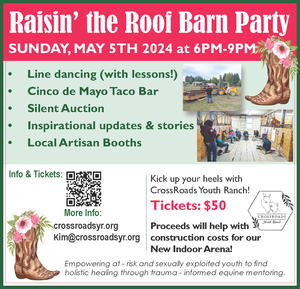School staff hear strategies for tribal student success
April 12, 2023
For decades the odds were stacked against Native American students succeeding in the U.S. educational system.
Statistics bear that out.
La Conner Schools faculty and staff reviewed the data during a special program featuring Dennis Eller in late March. Eller is a member of the Cherokee Nations, an administrator at Thomas Jefferson High School in Federal Way and a doctoral candidate.
“I had better odds of becoming a starter in the National Football League,” Eller said at one point of his 75-minute presentation, “than I did of earning a doctorate.”
Eller showed the chances of making a pro football team’s starting lineup and a Native American student being conferred with a doctorate degree are each well below one per cent.
But there are ways of improving those odds for tribal youth, said Eller, also a military veteran. He provided research-driven strategies proven to engage Native American students and improve their prospects for academic achievement.

Several of those – including opening school programs with tribal drum songs, offering courses in Lushootseed and forging mutually beneficial partnerships with Native American communities – are already being employed, noted Andy Wheeler, director of special program. He helped coordinate Eller’s appearance.
“We’re doing things well,” Wheeler told his colleagues after Eller had lauded the district for its collaborative ventures with the Swinomish Indian Tribal Community and learning that graduation rates here for Native American students far surpasses the national average.

Eller said that at its inception, at the outset of the industrial revolution, public education in the U.S. was marred by a disconnect between Native American students and the objectives and goals of the schools they were attending.
“The practice of assimilation,” he said, “led to the boarding school crisis,” the trauma inflicted upon Native American students at parochial and government schools in the U.S. and Canada in the 19th and 20th centuries.
Eller said teachers can enhance student achievement – especially that of tribal youth – by doing their own homework. “You have to know the struggles and challenges that Native American students face when they come into your school,” he said.
Eller’s research shows Native American students have long gauged their academic success not upon earning diplomas and degrees but by how well they learned to navigate the white culture.

It is crucial to establish a campus climate that acknowledges Native culture and history and erases false narratives and beliefs.
Other priorities, Eller noted, include incorporating Native American art and literature in the school curriculum, providing opportunities for students to participate in cultural activities and inviting tribal partners to participate in school programs.
Hiring Native American staff, scheduling language acquisition classes and taking tribal students on field trips to college campuses are likewise effective, he said.
“At Thomas Jefferson,” Eller said, “we used these practices and our graduation rate increased and our discipline referrals were reduced.”

La Conner educators are proposing working with Swinomish on implementing an “Adopt an Elder” program for various classes and home rooms.
Eller gave than idea an “A.”
“I’m impressed with the relationship you have with your tribal partners,” he said. “You’re doing a lot of great things here.”


Reader Comments(0)